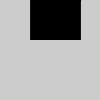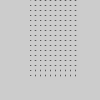This reference is for Processing 2.0+. If you have a previous version, use the reference included with your software. If you see any errors or have suggestions, please let us know. If you prefer a more technical reference, visit the Processing Javadoc.
| Name | for |
||||||||||||||
|---|---|---|---|---|---|---|---|---|---|---|---|---|---|---|---|
| Examples | 
for (int i = 0; i < 40; i = i+1) {
line(30, i, 80, i);
}

for (int i = 0; i < 80; i = i+5) {
line(30, i, 80, i);
}

for (int i = 40; i < 80; i = i+5) {
line(30, i, 80, i);
}

// Nested for() loops can be used to
// generate two-dimensional patterns
for (int i = 30; i < 80; i = i+5) {
for (int j = 0; j < 80; j = j+5) {
point(i, j);
}
}

int[] nums = { 5, 4, 3, 2, 1 };
for (int i : nums) {
println(i);
}
| ||||||||||||||
| Description |
Controls a sequence of repetitions. A basic for structure has three parts: init, test, and update. Each part must be separated by a semicolon (;). The loop continues until the test evaluates to false. When a for structure is executed, the following sequence of events occurs: 1. The init statement is run. 2. The test is evaluated to be true or false. 3. If the test is true, jump to step 4. If the test is false, jump to step 6. 4. Run the statements within the block. 5. Run the update statement and jump to step 2. 6. Exit the loop. In the first example above, the for structure is executed 40 times. In the init statement, the value i is created and set to zero. i is less than 40, so the test evaluates as true. At the end of each loop, i is incremented by one. On the 41st execution, the test is evaluated as false, because i is then equal to 40, so i < 40 is no longer true. Thus, the loop exits. A second type of for structure makes it easier to iterate over each element of an array. The last example above shows how it works. Within the parentheses, first define the datatype of the array, then define a variable name. This variable name will be assigned to each element of the array in turn as the for moves through the entire array. Finally, after the colon, define the array name to be used. |
||||||||||||||
| Syntax |
for (init; test; update) {
statements
}
for (datatype element : array) {
statements
}
| ||||||||||||||
| Parameters |
| ||||||||||||||
| Related | while |
